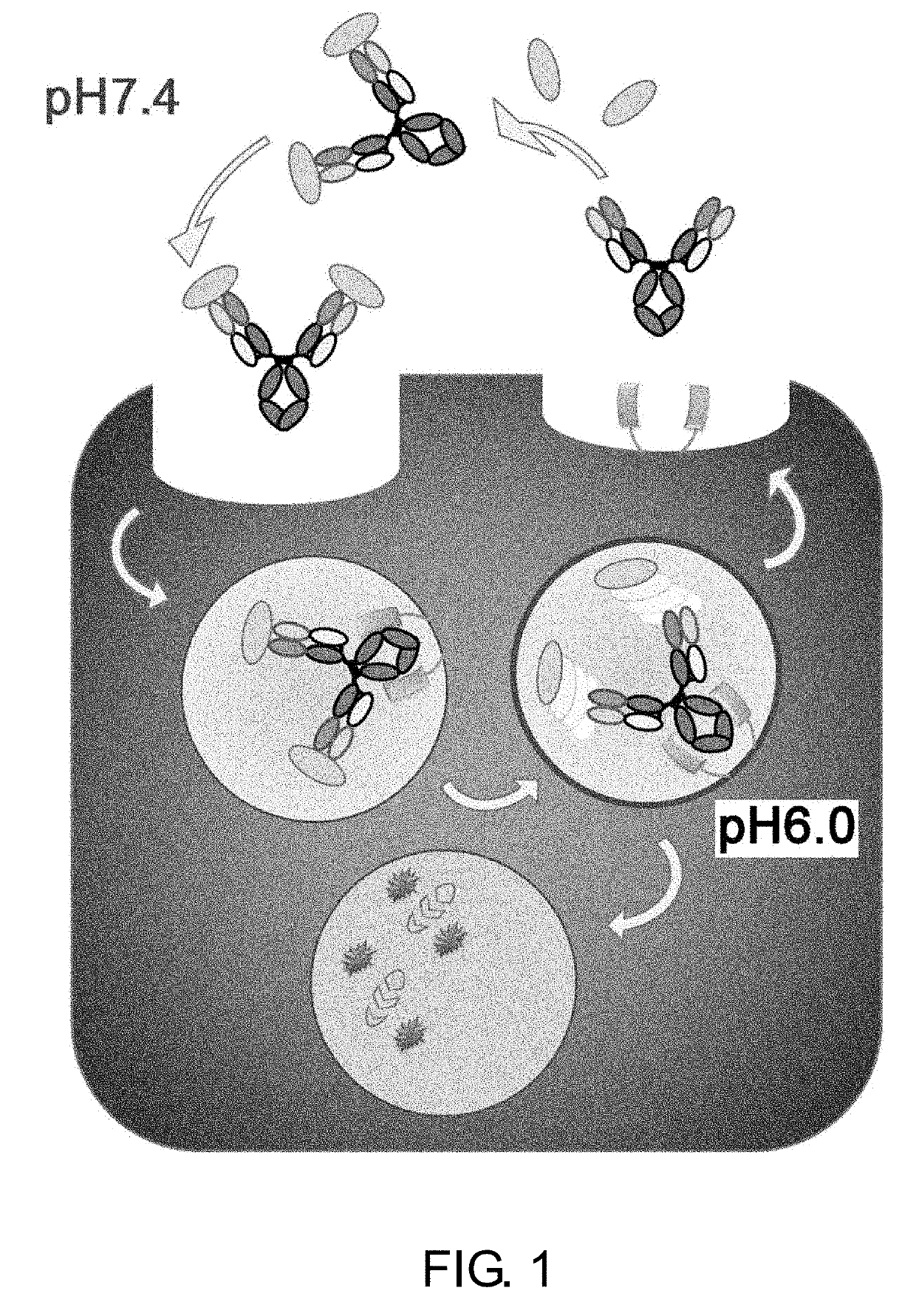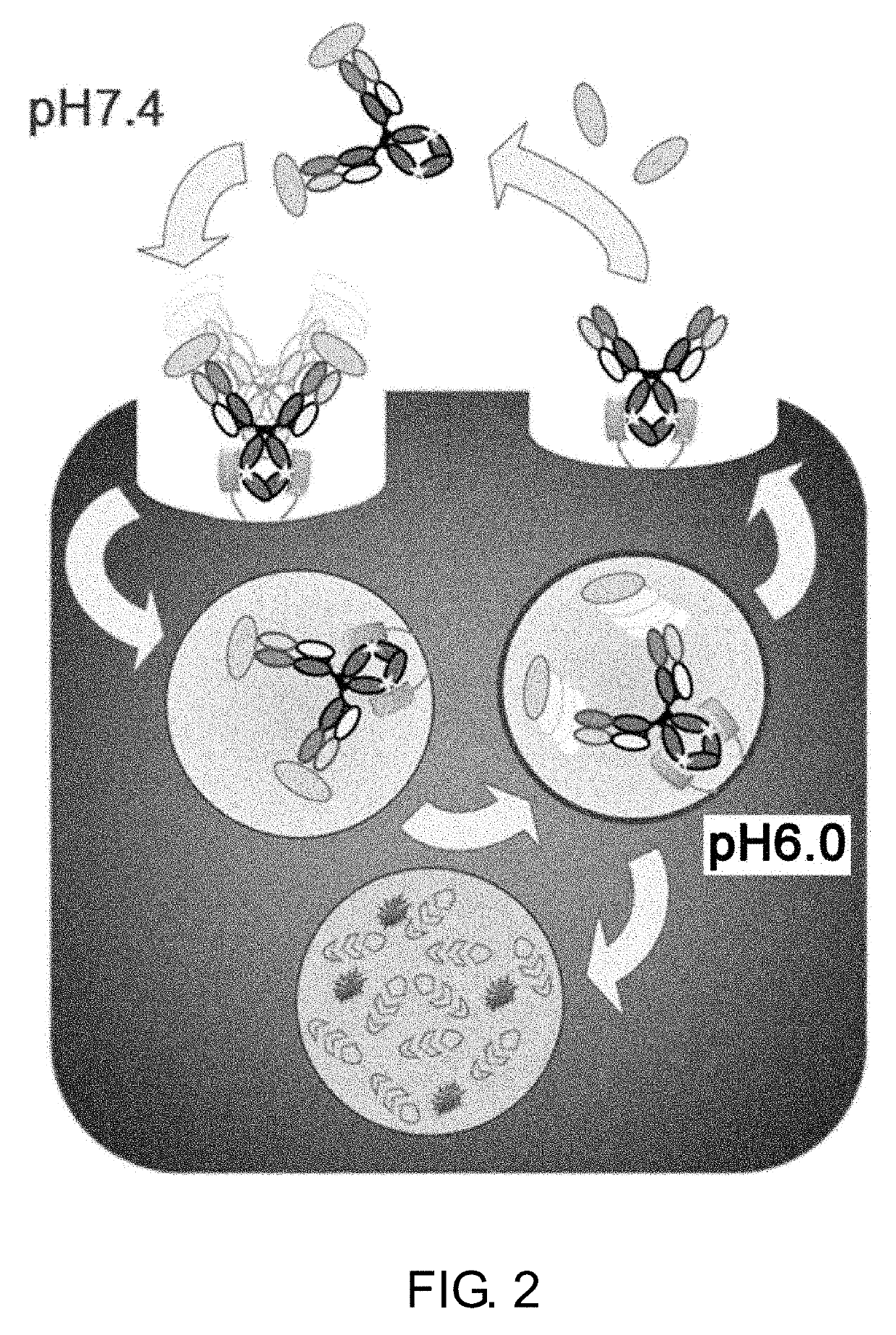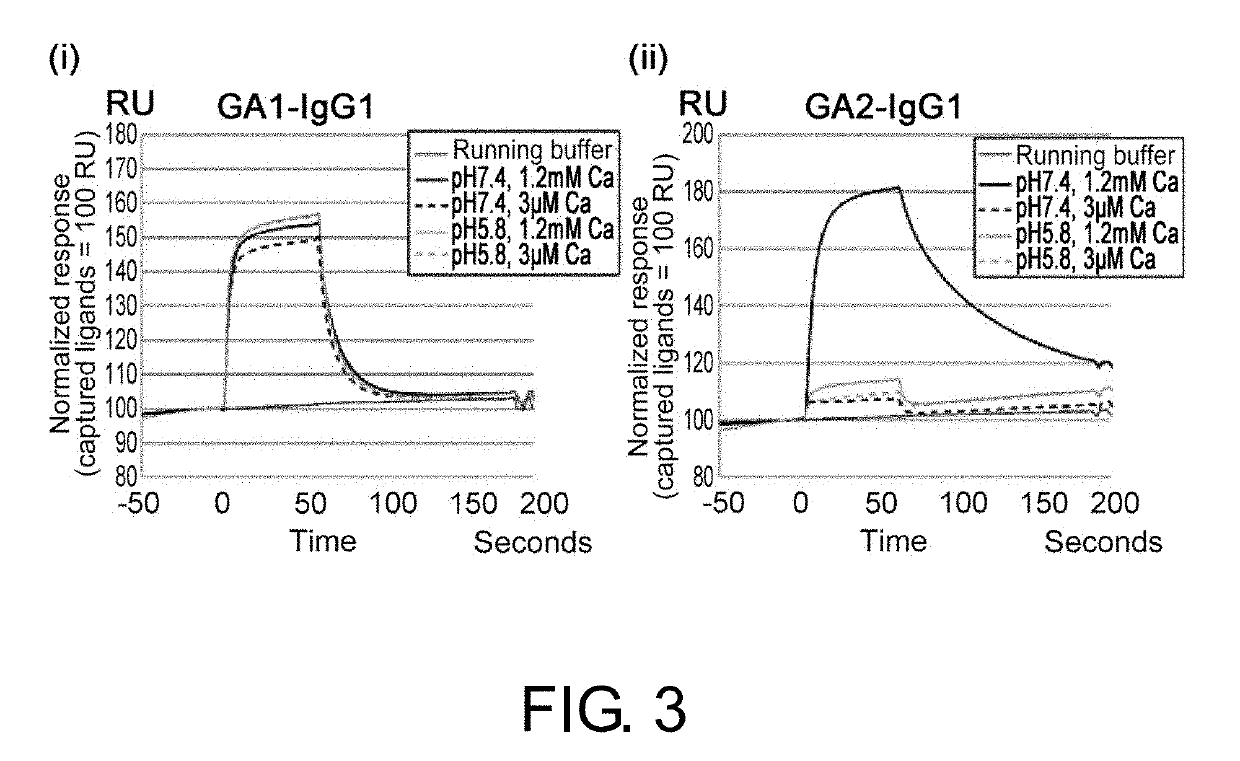Drug containing carrier into cell for forming immune complex
a carrier and antibody technology, applied in the field of antigen-binding molecules, can solve the problems of high production cost, difficult production of subcutaneous formulations, and limitation of the ability of single antibody molecule to bind to conventional methods, and achieve the effect of reducing the number of antibodies
- Summary
- Abstract
- Description
- Claims
- Application Information
AI Technical Summary
Benefits of technology
Problems solved by technology
Method used
Image
Examples
example 1
[Example 1] Preparation of Antibodies that Bind to Human IgA in a Calcium-Dependent Manner
[0465]1-1. Preparation of Human IgA (hIgA)
[0466]Human IgA (hereinafter also abbreviated as “hIgA”) was prepared as an antigen by using the following recombinant techniques. hIgA was expressed by culturing host cells carrying recombinant vectors inserted with H (WT)-IgA1 (SEQ ID NO: 49) and L (WT) (SEQ ID NO: 50) and purified by a method known to those skilled in the art using ion-exchange chromatography and gel filtration chromatography.
1-2. Antibodies with Calcium-Dependent Binding
[0467]H54 / L28-IgG1 described in International Publication No. WO 2009 / 125825 is a humanized anti-IL-6 receptor antibody. Fv4-IgG1 is a humanized anti-IL-6 receptor antibody that results from conferring H54 / L28-IgG1 with the property of binding to soluble human IL-6 receptor in a pH-dependent manner (i.e., of binding under neutral condition and dissociating under acidic condition). The in vivo test described in Intern...
example 2
[Example 2] Preparation of Modified Antibodies that Bind to hIgA in a Calcium-Dependent Manner
[0475]Next, to further enhance antigen (hIgA) elimination from plasma, GA2-N434W (heavy chain SEQ ID NO: 41; light chain SEQ ID NO: 40) was constructed by introducing amino acid substitution N434W into GA2-IgG1, which binds to hIgA in a calcium-dependent manner, to potentiate the binding to mouse FcRn at pH 7.4. Furthermore, GA2-FcγR(−) (heavy chain SEQ ID NO: 42; light chain SEQ ID NO: 40) was constructed by introducing amino acid substitutions L235R and S239K into GA2-IgG1 to eliminate the FcγR-binding affinity. The modified antibodies were expressed by the method described above using animal expression plasmids inserted with DNA sequences encoding GA2-N434W (heavy chain SEQ ID NO: 41; light chain SEQ ID NO: 40) and GA2-FcγR(−) (heavy chain SEQ ID NO: 42; light chain SEQ ID NO: 40) by a method known to those skilled in the art. The antibody concentrations were determined after purificatio...
example 3
[Example 3] Assessment of the Effect of Ca-Dependent hIgA-Binding Antibodies on Plasma Retention of an Antigen Using Normal Mice
3-1. In Vivo Test Using Normal Mice
[0476]In vivo kinetics of hIgA and anti-hIgA antibody was assessed after administration of hIgA (human IgA; prepared as described in Example 1) alone or in combination with an anti-hIgA antibody to normal mice (C57BL / 6J mice; Charles River Japan). An hIgA solution (80 μg / mL) or a mixture of hIgA and anti-hIgA antibody was administered once at a dose of 10 mL / kg via the caudal vein. Anti-hIgA antibodies used were GA1-IgG1, GA2-IgG1, GA2-N434W, and GA2-FcγR(−) described above.
[0477]In every mixture, the hIgA concentration was 80 μg / mL. Meanwhile, the anti-hIgA antibody concentration varied depending on the antibody affinity for hIgA. GA1-IgG1 was prepared at 10 mg / mL; GA2-IgG1 at 2.69 mg / mL; GA2-N434W at 1 mg / mL; and GA2-FcγR(−) at 2.69 mg / mL. Under the conditions described above, the majority of hIgA is predicted to bind to...
PUM
| Property | Measurement | Unit |
|---|---|---|
| Temperature | aaaaa | aaaaa |
| Fraction | aaaaa | aaaaa |
| Molar density | aaaaa | aaaaa |
Abstract
Description
Claims
Application Information
 Login to View More
Login to View More - R&D
- Intellectual Property
- Life Sciences
- Materials
- Tech Scout
- Unparalleled Data Quality
- Higher Quality Content
- 60% Fewer Hallucinations
Browse by: Latest US Patents, China's latest patents, Technical Efficacy Thesaurus, Application Domain, Technology Topic, Popular Technical Reports.
© 2025 PatSnap. All rights reserved.Legal|Privacy policy|Modern Slavery Act Transparency Statement|Sitemap|About US| Contact US: help@patsnap.com



